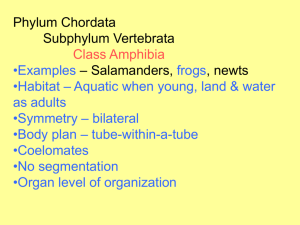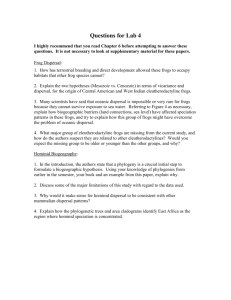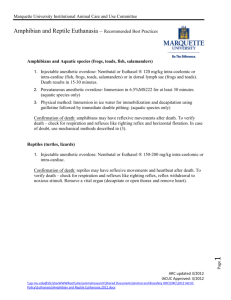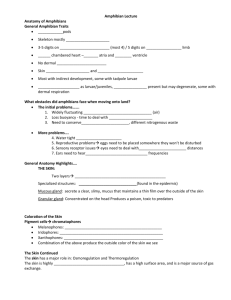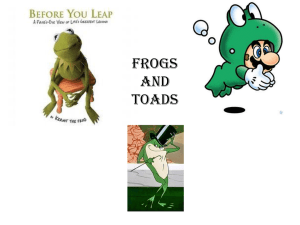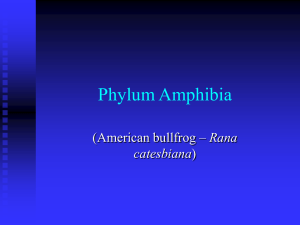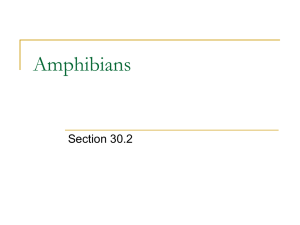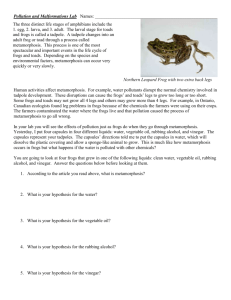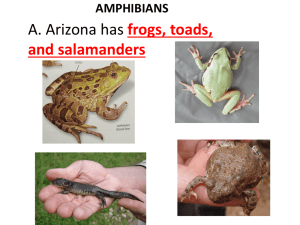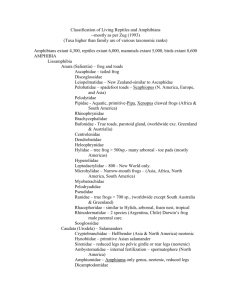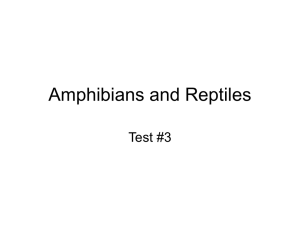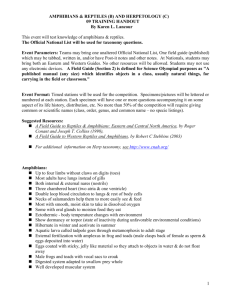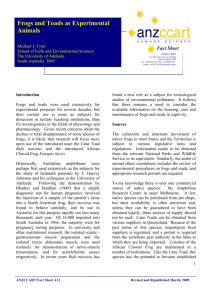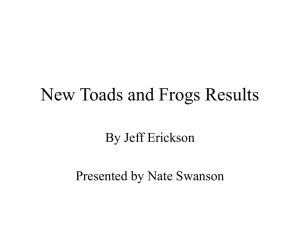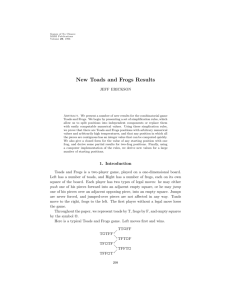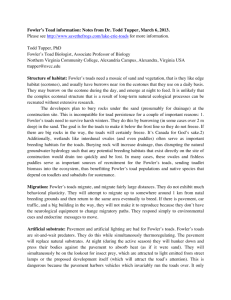Neobatrachia or advanced frogs comprise more than 95% of extant
advertisement
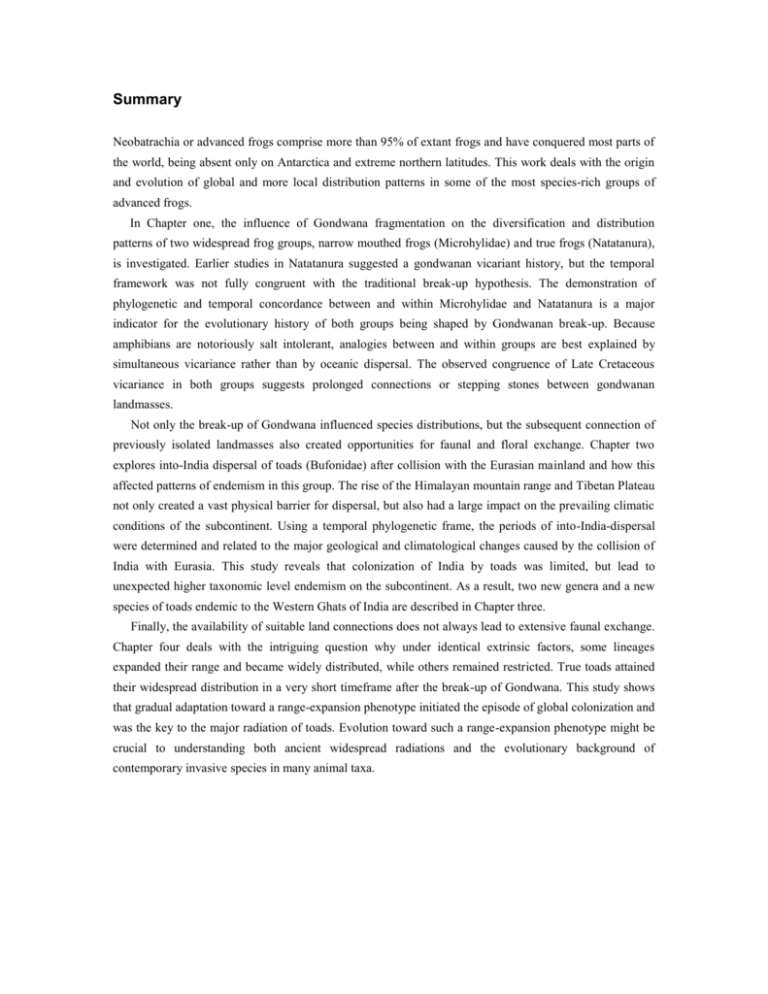
Summary Neobatrachia or advanced frogs comprise more than 95% of extant frogs and have conquered most parts of the world, being absent only on Antarctica and extreme northern latitudes. This work deals with the origin and evolution of global and more local distribution patterns in some of the most species-rich groups of advanced frogs. In Chapter one, the influence of Gondwana fragmentation on the diversification and distribution patterns of two widespread frog groups, narrow mouthed frogs (Microhylidae) and true frogs (Natatanura), is investigated. Earlier studies in Natatanura suggested a gondwanan vicariant history, but the temporal framework was not fully congruent with the traditional break-up hypothesis. The demonstration of phylogenetic and temporal concordance between and within Microhylidae and Natatanura is a major indicator for the evolutionary history of both groups being shaped by Gondwanan break-up. Because amphibians are notoriously salt intolerant, analogies between and within groups are best explained by simultaneous vicariance rather than by oceanic dispersal. The observed congruence of Late Cretaceous vicariance in both groups suggests prolonged connections or stepping stones between gondwanan landmasses. Not only the break-up of Gondwana influenced species distributions, but the subsequent connection of previously isolated landmasses also created opportunities for faunal and floral exchange. Chapter two explores into-India dispersal of toads (Bufonidae) after collision with the Eurasian mainland and how this affected patterns of endemism in this group. The rise of the Himalayan mountain range and Tibetan Plateau not only created a vast physical barrier for dispersal, but also had a large impact on the prevailing climatic conditions of the subcontinent. Using a temporal phylogenetic frame, the periods of into-India-dispersal were determined and related to the major geological and climatological changes caused by the collision of India with Eurasia. This study reveals that colonization of India by toads was limited, but lead to unexpected higher taxonomic level endemism on the subcontinent. As a result, two new genera and a new species of toads endemic to the Western Ghats of India are described in Chapter three. Finally, the availability of suitable land connections does not always lead to extensive faunal exchange. Chapter four deals with the intriguing question why under identical extrinsic factors, some lineages expanded their range and became widely distributed, while others remained restricted. True toads attained their widespread distribution in a very short timeframe after the break-up of Gondwana. This study shows that gradual adaptation toward a range-expansion phenotype initiated the episode of global colonization and was the key to the major radiation of toads. Evolution toward such a range-expansion phenotype might be crucial to understanding both ancient widespread radiations and the evolutionary background of contemporary invasive species in many animal taxa.

